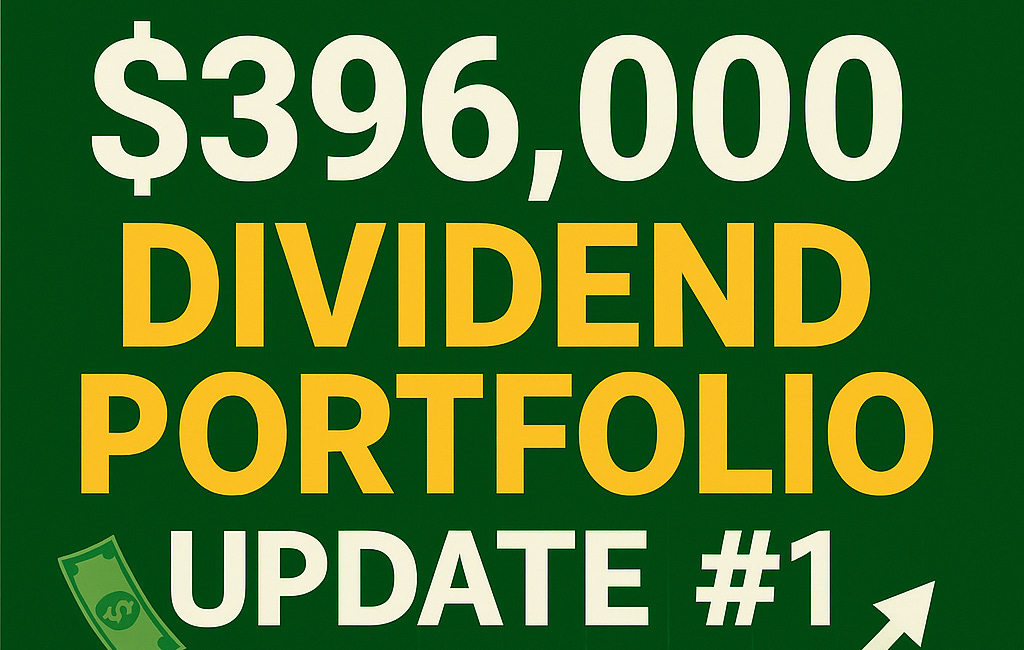It's Easy To Outperform The S&P 500 - Here's How
Why Diversification Might Be Hurting Your Returns and How Margin, Income, and Momentum Can Change the Game
Over the past year, my portfolio is up 33.68%, more than doubling the return of the S&P 500 and trouncing the average diversified “blended” portfolio by nearly 20 percentage points. While most investors are taught to diversify and play defense, I’ve taken a more aggressive, intentional approach and the results speak for themselves.
Most people assume beating the market is either impossible or requires extreme risk. I’m here to show that it’s not only possible but replicable.
The truth is, most of the S&P 500’s performance comes from a small handful of mega cap stocks. If you dilute your exposure by over diversifying across underperforming sectors, you lose the momentum those leaders provide. I don’t do that. I concentrate. So the honest truth is that I’ve done nothing special.
And I take it a step further. I use margin debt not to chase hype stocks or time the market but to acquire high yield, weekly paying ETFs like QDTY 0.00%↑ , XDTE 0.00%↑ , and YMAX 0.00%↑ . These funds generate massive income, often yielding 30 to 50 percent annually, and many of them still mirror the performance of major indexes like the Nasdaq 100 or S&P 500. I have been able to collect nearly $4,000 in dividends last month and despite the myth that income investments underperform the market, I have been able to outpace the indexes while simultaneously collecting a full-time income.
That income doesn’t sit idle. I funnel it into long term growth assets such as tech, QQQM, dividend growers, and more. It’s a loop that builds momentum. Income fuels reinvestment, reinvestment fuels growth, and growth boosts my long term returns.
The Diversification Trap
Most investors are told to diversify early and often. Spread your risk, own a little of everything, and ride out the waves. It sounds smart, but here’s the problem — broad diversification usually guarantees average returns. And in markets where a handful of stocks drive most of the gains, average isn’t good enough.
Just look at the S&P 500. Over the last decade, the majority of its performance has come from a small group of tech giants such as Apple AAPL 0.00%↑, Microsoft MSFT 0.00%↑, Nvidia NVDA 0.00%↑, Amazon AMZN 0.00%↑, and Google GOOG 0.00%↑. If you’re holding dozens of lagging sectors or low-growth value stocks just for the sake of being diversified, you’re diluting your exposure to the only companies doing the heavy lifting. But it’s okay, I’ve done this exact thing before too. I’ve held companies like Johnson&Johnson JNJ 0.00%↑ and have not benefitted at all.
Worse, many “diversified” portfolios underperform simple index funds. A mix of international stocks, bonds, and alternatives might feel safer, but in reality, they add complexity without adding meaningful return.
I chose a different path. I built around strength. That means:
Concentrating in high-performing sectors like tech and innovation
Using ETFs that mirror the strongest indexes (Nasdaq 100, S&P 500)
Avoiding dead weight like low-yield bonds or underperforming regions
Instead of trying to own everything, I focus on owning the best. And when I pair that with an income engine powered by leverage, the results compound fast.
Tech's Profit Margins
Technology companies consistently outperform other sectors in profitability, a key factor in their dominant market positions. This financial strength enables them to reinvest in innovation, scale operations efficiently, and deliver substantial returns to shareholders.
The technology sector, particularly software and platform-based companies, boasts some of the highest profit margins in the market. For instance, software-as-a-service (SaaS) companies often achieve gross margins between 70% and 90%, thanks to low variable costs and scalable business models . This contrasts sharply with industries like automotive or retail, where margins are typically much lower.
Even within the broader tech industry, profit margins vary:
System & Application Software: Approximately 24.2% net margin
Semiconductors: Around 18.8% net margin
Internet Services: Approximately 64.7% gross margin
These are the same reasons I am building my Google position.
Google: Why I'm Adding $20K To This Stock
Alphabet Inc. is far more than just a search engine giant. While its advertising business remains a formidable cash cow, the company is actively cultivating multiple, high-growth ventures that are poised to redefine its future and offer substantial upside for investors. From its pioneering efforts in autonomous driving to its advancements in artificia…
These robust margins provide tech companies with the financial flexibility to invest in research and development, pursue strategic acquisitions, and weather economic downturns more effectively than their lower-margin counterparts.
For investors, the high profitability of tech companies translates into more reliable earnings and the potential for sustained growth. Companies like Apple, Microsoft, and Alphabet not only generate substantial profits but also reinvest those earnings to drive innovation and expand their market share. This cycle of profitability and reinvestment creates a compelling case for including high-margin tech stocks in a diversified investment portfolio.
Margin Isn’t a Threat. It’s an Engine
Most people avoid margin because they fear the downside. But when used with purpose, margin becomes one of the most powerful tools in the income investor’s toolbox.
Here’s the key difference between margin and traditional debt: there is no set paydown date. No monthly bill. No fixed amortization. As long as your portfolio maintains enough value to meet maintenance requirements, you control the timeline.
And that opens the door to a powerful equation
If the yield you collect is greater than the interest you pay, you’re increasing your equity every single week.
That’s what I’ve built my strategy around. I’m not using margin to chase hype stocks. I’m using it to buy income machines like QDTY, XDTE, and YMAX; ETFs that pay weekly and deliver 20 to 40% annualized yield.
The math is simple. If I borrow at 8% and collect 30% in income, I’ve got a 22% spread working in my favor. That excess income gets reinvested into long term growth, reducing my margin ratio and increasing ownership, all without selling a thing. When managed properly, margin allows you to compound faster, own more income producing assets, and build net worth at a pace that traditional buy and hold simply cannot match.
How To Collect A Dividend Every Week Using Debt
Let’s be honest. Your bills do not show up once a quarter.
$396,000 Dividend Portfolio Update #1
Most people share opinions. Fewer share receipts. Today I’m opening the curtain and walking you through my actual portfolio. Every fund, every stock, every decision reflects how I’m building income, protecting downside, and positioning for long-term wealth.
This chart shows how using margin strategically can dramatically accelerate compounding over time.
With a typical 8% return and no leverage, your $10,000 portfolio grows steadily to just over $21,500 after 10 years. But by using margin to boost returns to 15%, which is a realistic target when you’re collecting high weekly income that outpaces margin interest. In this scenario, that same $10,000 compounds to over $40,000.
Conclusion
Margin is not about reckless borrowing. It is about using the capital you already have to acquire more income-generating assets faster. When the yield you collect beats the interest you pay, you turn margin into a flywheel that accelerates compounding and increases equity over time.
Used wisely, margin gives you control over your growth curve. It lets you turn a passive portfolio into an active income machine — one that pays you weekly and builds long-term wealth at the same time.
What I’d Do With $1,000 Right Now If I Wanted to Start Building Passive Income
Let’s be real. One thousand dollars is not life-changing money.
I personally use Empower to track my progress and portfolio allocation. You can use Empower FOR FREE!
📊 Tool: Track Your Progress
Want to keep track of what you're earning, how much your portfolio yields, and where to reinvest?
📥 Dividend Tracker Template – $5
Simple, powerful Google Sheet to track your holdings, income, yield-on-cost, reinvestment, and more.
📘 Full System: Go From $0 to $500/Month in Income
If you’re ready to build a scalable dividend income portfolio from scratch, with real structure, strategy, and support. You can start here:
🚀 The Dividend Income Blueprint – $25
My complete guide that shows how I built over $3,000/month in passive income using a three-layer dividend system, reinvestment strategy, and sustainable yield portfolio design.
It includes:
The strategy I use
Portfolio structure breakdown
Real examples + reinvestment tactics
Income planning + risk controls
Bonus: Checklist, glossary, & asset filters
🧠Starter Kit
Want to get a well-rounded idea of where to start your investing journey? I have you covered here as well!














